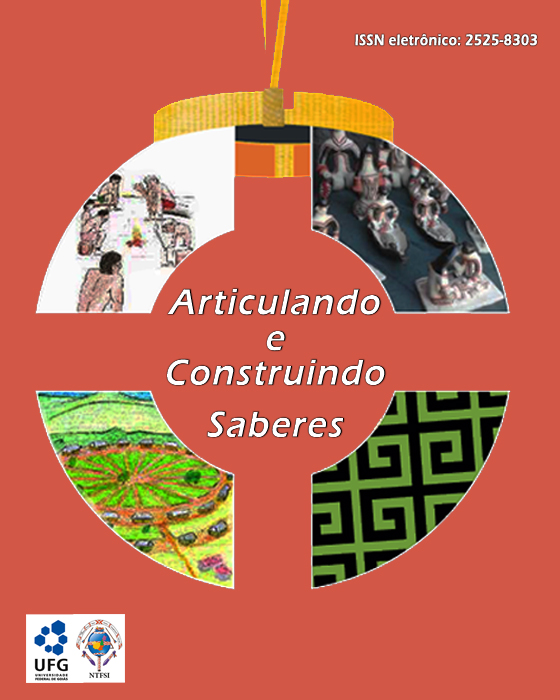Murals and zapatista citizenship
DOI:
https://doi.org/10.5216/racs.v5i.62486Keywords:
Construction of citizenship, EZLN, MuralsAbstract
The Zapatista Army of National Liberation uses dissemination strategies to publicize its ideology through mass media such as radio, the internet and murals where they transmit different moments of organization and tasks, they undertake to achieve their objectives. Both inside and outside their communities, the use of these strategies keeps them in force. With these resources they propagate their social interactions, relationships with others, planning in the type of community desired to have a coexistence with others. To analyze the messages that are reflected in the murals, the content analysis method was used to understand if: Do they build citizenship from the murals? With these paintings you can see the social relations, ideology with their autonomous communities and others. The murals studied were grouped into themes, where autonomous education is the basis for building community citizenship that they promote in their territories.
Downloads
References
ALONSO, L. Reseña de La mirada del poder de Pedro González-Trevijano. Reis. Revista Española de Investigaciones Sociológicas [en línea] 2004, (Sin mes): [Fecha de consulta: 16 de mayo de 2019] Disponible en: http://www.redalyc.org/articulo.oa" <http://www.redalyc. org/articulo.oa?id=99717669010>. ISSN 0210-5233. Acceso: 8 mar. 2019.
ARGILES, R; Robles J. Reseña de la construcción de los movimientos sociales de ENRIQUE LARAÑA Reis. Revista Española de Investigaciones Sociológicas, Madrid, España, n. 89, 2000, p. 357-363. Centro de Investigaciones Sociológicas. Disponible en: <http://www.redalyc.org/articulo. oa?id=99717889020>. Acceso: 4 mar. 2019.
BARDIN L. Análisis de contenido, 2a. edición, Madrid, AKAL Universitaria, 1 Serie Comunicación, 1986.
CALDERON, F. Memoria de un olvido. El muralismo boliviano, Nueva sociedad, Bolivia, n. 116, p. 146-152, diciembre 1991.
GARCIA, N. Modos de mirar los murales, Quimera de los murales del Palacio de Bellas Artes, 2004. Disponible en: . Acceso en: enero 2019.
GARRIDO, E La pintura mural mexicana, su filosofía e intención didáctica, Sophia, Colección de Filosofía de la Educación, núm. 6, 2009, pp. 53-72, Universidad Politécnica Salesiana Cuenca, Ecuador. Disponible en: http://www.redalyc.org/articulo.oa?id=441846107004.
GRATEROLG. (2010) Educación para la ciudadanía. La educación comunitaria y la participación ciudadana: debates actuales de la transformación social en Iberoamérica, Congreso Iberoamericano de Educación. Buenos Aires, Argentina.
JUAN, V. Multiculturalidad, ciudadanía y derechos humanos en México. Tensiones en el ejercicio de la autonomía indígena. Comisión Nacional de los Derechos Humanos. México, 2016.
MERINO J. (2009). Animación sociocultural, ciudadanía y participación. Disponible en: http: quadernsanimacio.net; No.9; enero de 2009; ISNN 1698-4044. Acceso en: 14 marzo. 2019.
TAMAYO S. Crítica de la Ciudadanía. Siglo XXI Editores, s.a de C.V. Universidad Autónoma Metropolitana. México, 2010.
TOLEDO, E, Roja y negra bandera nos cobijan los colores y el lenguaje cromático de los emblemas revolucionarios. 2017. En Pacarina del Sur, 8 (30), México. Disponible en: <http://www.pacarinadelsur.com/home/pielago-de-imagenes/168>. Acceso en: 4 abr. 2019.
VIVERO I. Murales y grafiti: expresiones simbólicas de la lucha de clase. Ánfora, 19 (33), 71-87, julio-diciembre 2012, Universidad Autónoma de Manizales. ISSN 01216538.
Downloads
Published
How to Cite
Issue
Section
License
Authors authorize Articulando e Construindo Saberes to publish an article, if accepted, signing their contribution as original and not submitted to another publisher for publication. If accepted and published, Articulando e Construindo Saberes articles have a Creative Comons CC-BY license.




